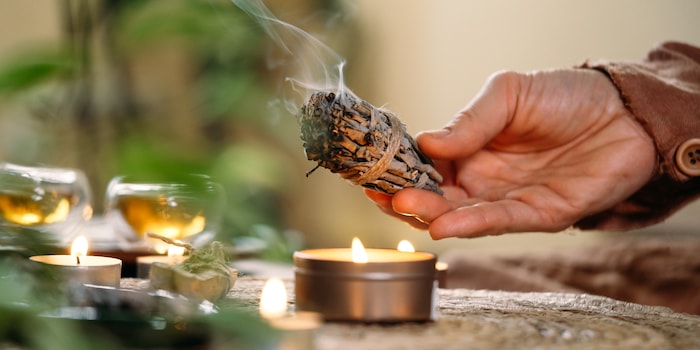
Background information
Gardening with children: The basics of sowing seeds
by Ann-Kathrin Schäfer

We used to burn incense to get rid of bad spirits. Now we do it for a nice smell and to feel better. Here’s how you can make burning incense part of your wellness programme.
350 euros per gramme for a natural product that turns into smoke. In Japan, agarwood – specifically Kyara – is one of the most valuable materials of traditional aroma and incense ceremonies. To be fair, you don’t light the incense directly, you heat it up on a metal plate. In other words, the agarwood doesn’t so much burn as release its precious fragrance. Agarwood isn’t just popular in Japan, but in many cultures. It’s even mentioned in the scriptures of the three great world religions, Christianity, Buddhism and Islam (page in German). It only develops its special scent when it’s attacked by microorganisms, and the tree develops a resin as a defence.
Burning wood, oils, resin and plants has been a worldwide tradition for centuries. In the past, people even believed that epidemics such as plague or cholera could be combated by burning herbs. And on those twelve winter nights between Christmas and Epiphany, people traditionally burned incense in houses, stables and flats to drive away evil spirits and to «disinfect» everything.
Nowadays you can still encounter the tradition in churches, for example, in the form of a fragrant incense. Others burn incense in their own home in a ritual that lies somewhere between a need to return to customs, «finding» themselves and combating stress. Whether it’s in combination with meditation, sound bowls, part of a yoga workout or just to rid bad smells – how does the ritual work? What can you burn and is there any scientific evidence for the effects on your body and spirit?
Fragrances affect the nose and radiate directly into the brain, and not just when burning. Basically, odour signals are the only sensory stimuli that reach the hippocampus and the limbic system in our brain directly. There, every scent influences our emotions and ultimately our behaviour. Science shows the human olfactory alphabet has around 400 different letters, i.e. types of olfactory cells that specialise in «a group of scent molecules, such as vanillin, musk or butyric acid». These allow us to react to danger in a split second because the brain reacts 15 times quicker to unpleasant odours, sometimes classified as dangerous odours, than to positive ones.
Did you know? All olfactory cells and their connections to the brain of an embryo are already formed in the womb. Humans therefore often adopt their mother’s experience of scents and related emotions even before they’re able to perceive odours themselves. However, smelling can also be learnt, which is why you can create new connections and associations throughout your life.
When we think about incense, it’s therefore logical that people like to bring good odours such as the essential oils of scented woods, the resin of special trees like frankincense or even lavender, rosemary or sage into their homes. Incense burning can even be a part of your wellness programme.
How it works depends on what variety of incense burning you go for. The most common method is the effective lighting and burning of dried plant leaves (such as white or native sage) tied together in small bunches. Briefly lit and then blown out again, they glow peacefully in a fireproof bowl and give off their fragrant scent.
Incense in resins is placed on small, round charcoal stones, which usually have a dip in the middle where you place the small «stones». Another method is indirect burning, as used in the Japanese incense ceremony described above. Here, the scented wood isn’t lit directly, but vaporised on a metal plate on hot coals. This method produces less smoke and only the oils contained in the wood are released.
White sage is particularly popular and is often available in ready-tied, tightly wrapped bunches. However, its cultivation and harvesting is controversial. Since making its triumphant advance into our homes, places where it occurs naturally (mainly northern Mexico and southern California) are virtually being cleared. While indigenous populations use white sage for sacred ceremonies and never harvest it down to the root, the high demand has led to a drastic decline in natural sources. But there are local alternatives. Here are some herbs and plants that are suitable for burning at home:
For perfect incense burning with these fragrant natural raw materials, it’s best to use a special burning charcoal, a fireproof bowl and some sand to place the charcoal on so the bowl doesn’t get too hot on the underside. You can then put the berries, dried leaves or resins on the charcoal and enjoy the natural room fragrance.
Notebook, camera, laptop or smartphone. For me, life's about taking notes – both analogue and digital. What's always on me? My iPod Shuffle. It's all in the mix, after all. This is also reflected in the topics I write about.
Interesting facts about products, behind-the-scenes looks at manufacturers and deep-dives on interesting people.
Show all
Background information
by Ann-Kathrin Schäfer

Background information
by Lorenz Keller

Background information
by Darina Schweizer